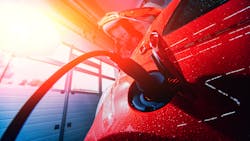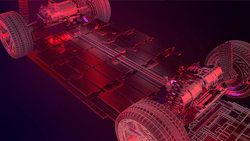What’s Trending for Electric Vehicles in 2023?
This article is part of the 2023 Electronic Design Technology Forecast issue.
What you'll learn:
- Smart apps to balance travel and home energy needs.
- Construction companies going green with EVs?
- Getting older generations on board with EVs.
The automotive revolution is reshaping our world, with innovations in both electric vehicles (EVs) and autonomous vehicles (AVs) continuing at a feverish pace. But challenges remain in large-scale charging, charging infrastructure, and battery technology advances needed to drive range and cost improvements. For example:
- EV range anxiety will remain until 300+ miles is standard on a single charge and high-speed charging in under 10 minutes is readily available. Until this happens, commercial vehicles will remain gas guzzlers.
- EVs will require the adoption of common standards by the entire ecosystem to be mainstream across the globe.
- Battery innovation such as silicon anodes and solid-state batteries will be needed to overcome many of the barriers to adoption.
Electric vehicles are driving more integrated and intelligent energy consumption. Within the next decade, EVs will become an energy repository for users, whether on the road or in their homes.
Intelligent applications will look at calendars to determine the energy required to power the next day's travel and then individuals will utilize the remaining battery for their home energy needs. I predict major power providers will awaken to this possibility by 2025 and realize that EVs pose a clear and present threat to their static grid infrastructure.
The construction industry is going green with EVs. To date, EVs have been associated with climate-conscious consumers, but by 2025, expect adoption to come from some surprising sectors. For example, the construction industry stands to reap numerous benefits from utilizing EVs' excess energy to power machinery that previously required cumbersome generators or numerous extension cords to function.
Time to board the EV train. Younger generations don’t view cars as status symbols and embrace the “Uberization” of vehicles—i.e., the idea that a car just needs to get you from point A to point B with minimal environmental impact. However, the same can’t be said for Boomers and Generation X.
To meet the greener energy deadlines of 2035, it’s vital that these groups change their thinking and adopt EVs. Expect this to be a key area of focus in 2023, with numerous campaigns aimed at educating older demographics about the need for EVs.
Read more articles in the 2023 Electronic Design Technology Forecast issue.

